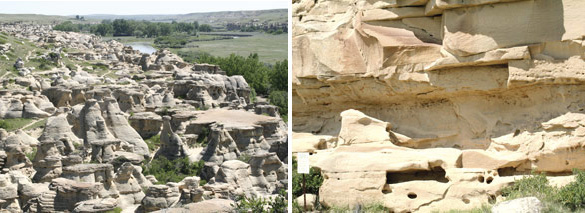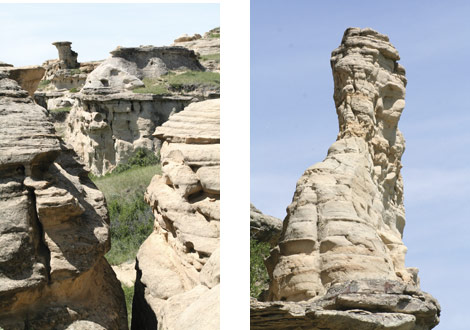Assemblage IV

Silent Messengers: Assemblage IV
Collagraph on paper and archival inkjet on mylar layer
(Layers attached together at top edge)
A unique assembled print
34 x 25.5 cm.

Silent Messengers: Assemblage IV
Collagraph on paper and archival inkjet on mylar layer
(Layers attached together at top edge)
A unique assembled print
34 x 25.5 cm.
April 18, 2007 in Printworks, Silent Messengers by Marja-Leena 13 Comments »

Silent Messengers: Assemblage III
Collagraph on paper and archival inkjet on mylar layer
(Layers attached together at top edge)
A unique assembled print
34.5 x 26 cm.
April 9, 2007 in Printworks, Silent Messengers by Marja-Leena 23 Comments »

Silent Messengers: Assemblage II
Collagraph on paper and archival inkjet on mylar layer
(Layers attached together at top edge)
A unique assembled print
35.5 x 29 cm.
April 3, 2007 in Printworks, Silent Messengers by Marja-Leena 18 Comments »

Silent Messengers: Assemblage I
Collagraph on paper and archival inkjet on two mylar layers
All layers attached together at top edge
A unique assembled print
35.5 x 29 cm.
March 29, 2007 in Printworks, Silent Messengers by Marja-Leena 6 Comments »

Janus – etching, 40 x 37.5 cm.
Good grief, it’s already the end of January! Christmas was only yesterday. I’ve meant to write this all month because my thoughts have been frequently circling around the notion of looking back and looking ahead while standing over a gate like a moment in time. This made me think of Janus and of this etching, one of a small series of prints I made on the Janus theme over two decades ago. (They can be found in the archives under “Older Works”.)
Janus is the Roman god of gates and doors (ianua), beginnings and endings, and hence represented with a double-faced head, each looking in opposite directions. He was worshipped at the beginning of the harvest time, planting, marriage, birth, and other types of beginnings, especially the beginnings of important events in a person’s life. Janus also represents the transition between primitive life and civilization, between the countryside and the city, peace and war, and the growing-up of young people.
Still seems pretty relevant, doesn’t it?
Janus is also the sixth satellite of Saturn. I wonder if that has any astrological or other significance on us earthly subjects?
January 31, 2007 in Being an Artist, Printworks by Marja-Leena 2 Comments »

Head Study – drypoint, image size 11 x 8.5 cm.
Recently I was going through the very few prints that I still have from my long-ago art school days. This small drypoint is one of them. I remember how fascinated I was in observing heads from an odd perspective, the heads as if slung back, or viewed from a child’s eye level.
November 18, 2006 in Older Works, Printworks by Marja-Leena 8 Comments »

Veils Suite: Portrait of a Couple
monotype (oil-based inks)
76 x 57 cm.
This was one of the first pieces in the series of monotypes within the Veils Suite series.
More here
September 9, 2006 in Printworks, Veils Suite by Marja-Leena 4 Comments »

Veils Suite: The Crowd II
monotype (oil-based inks)
76 x 57 cm.
About these monotypes
August 13, 2006 in Printworks, Veils Suite by Marja-Leena 9 Comments »
August 1, 2006 in Printworks, Veils Suite by Marja-Leena 10 Comments »

This was the big day, the main reason for this trip. We finally made it to Writing-on-Stone Provincial Park in southern Alberta, a major site of hoodoos, petroglyphs and pictographs.
Some readers may remember that I wrote about Writing-on-Stone Park and how we had planned to visit it a year ago, but unusual heavy rains and flooding had forced a postponement. New readers may want to read that post, as well as one I wrote about hoodoos.
With cameras, lots of water, lunch, snacks plus hats and sunscreen, we set off from our hotel in Lethbridge. Heading southeast towards Milk River, the drive was pleasant and took about an hour and a half. Coming in, we had a fantastic first impression of the huge site overlooking the river. We knew that the Archaeological Preserve with the majority of the petroglyphs is protected from vandals and access was limited to guided tours daily in the afternoon. We found the park manager who informed us that the tour guide was away for several days on her days off and no one else could do it! There is only one guide now, compared to the two who were there last year. Blame the cutbacks in government funding (this is in Alberta where the economy is booming because of oil!) The park website has not been updated in years, phone service is a taped message, and tours cannot be booked in advance. It seems almost like they do not want visitors there! What’s a traveller from far away to do? You can imagine my disappointment.

Anyway, we were told about the self-guided walking tour of the sandstone rocks and the locations of just a few petroglyphs on that route. After a quick lunch we set off, heeding warnings about staying on paths to avoid rattlesnakes – a first time for us! It was getting hot but we were quite mesmerized by the amazing rock formations, spending a lot of time taking photos. It really was an amazing, almost mystical experience, indeed a sacred place. And we did come to an area with about four discernible petroglyphs.
We ran out of time to go to the very end of the more than two hour walk, one way (without stopping to take photos I bet!) where we would have seen more. (Again, more information beforehand would have allowed us to plan better. We had to be back in Lethbridge to meet an old friend for dinner). Back near the parking lot we found some descriptive panels about the petroglyphs and the Blackfoot people who lived here and created them.
There were disappointments but nevertheless we loved the immense area of hoodoos here. We got about a hundred excellent digital photos (thanks to my husband) and some film ones that I took of close-up details and still haven’t developed because the roll hasn’t been fully exposed. I”m having a difficult time choosing photos to post here, that will look good in a small format! I’m really excited to have the rock photos to use in my continuing Silent Messenger series. But I hope to go back again to see the rock art and the rest of the park sometime!

Related links:
Writing on Stone Provincial Park brochure (pdf)
some nice photos of WOSPP
Alberta Trip Day 1, Day 2, Day 4 and Days 5 & 6
Addendum July 16 and July 31, 2006: See more of our photos here, here and here.
June 22, 2006 in Being an Artist, Printworks, Rock Art & Archaeology, Rocks by Marja-Leena | Tags: hoodoos, petroglyphs and pictographs, Writing-on-Stone Provincial Park
6 Comments »
© Marja-Leena Rathje 2004-2024